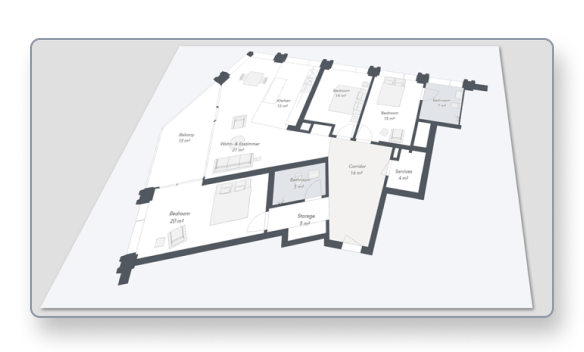Floor plan requirements
This article shows you a couple of points to keep in mind when ordering a floor plan conversion
Floor plans come in a lot of different forms. Some of them only consist of single lines, some contain technical information while others are even hand-drawn. To ensure that you get a satisfying result when ordering a building model conversion you have to follow these guidelines.
Minimum quality requirements
Accepted file types
The floor plan that you upload through the order form has to be in one of the following file formats for us to be able to process it:
- JPG
- PNG
- DWG
- DXF
Scale bar or measurement
Additional scaling references such as a measurement or a scale bar are only required for JPG, PNG, and PDF floor plans.
DWG, and DXF floor plans usually already have scaling information baked into the files.
Make sure that the floor plan you're uploading has a scale bar or other dimension references such as a readable measurement for the length and width of a building, wall, or similar.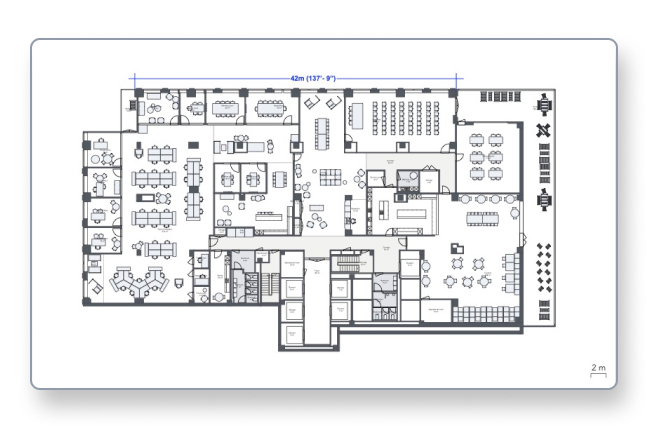
A scale bar similar to the image shown below allows us to scale a floor plan properly and to the correct dimensions so that the resulting model is an accurate representation of the real-world building. You can usually find the scale bar at the lower right-hand side corner of a floor plan.

While Archilogic does have alternative methods for estimating the dimensions of a floor plan they're not always applicable and if they are, the result may not be as accurate as when the original floor plan already includes a scale bar. These inaccuracies can affect larger floor plans more heavily than smaller ones as the discrepancies will start to add up over longer distances.
These alternative scaling methods include:
- Assuming the width of a stair to be 1.2m
- Assuming the width of a toilet partition space to be 0.9m
- Assuming the widths of office desks to be either 1.6x0.8m or 4x2ft
- Assuming the width of standard doors to be at least 0.72m
Archilogic is unable to guarantee an accurate building model if a proper scale or measurement is not provided with the floor plan.
If the alternative scaling methods mentioned above are not applicable to a specific order we will have to reject it.
Floor plan image resolution
The image resolution of a floor plan needs to be high enough for us to be able to read the details on it. We need to be able to see where a window or a door starts and where it ends or how wide a wall is or what the function of a space is. If the resolution of the floor plan is not high enough it can either result in an inaccurate 3D model or even force us to reject an order as we're not able to read it and create a sufficiently accurate 3D model.
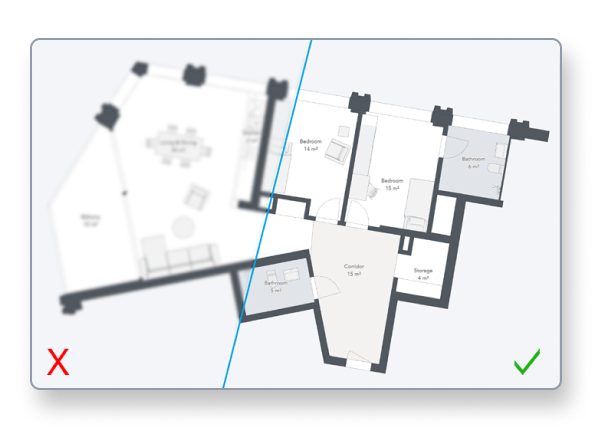
Color markings
If the floor plan contains colors like the blue areas shown in the example below make sure that you mark which part of the floor plan you want us to convert for example with a red line as we might make the wrong assumptions otherwise and only convert one part or the wrong part.
In addition, make sure that the additional markings do not obscure floor plan details like walls or windows as those are required by us to create the conversion.
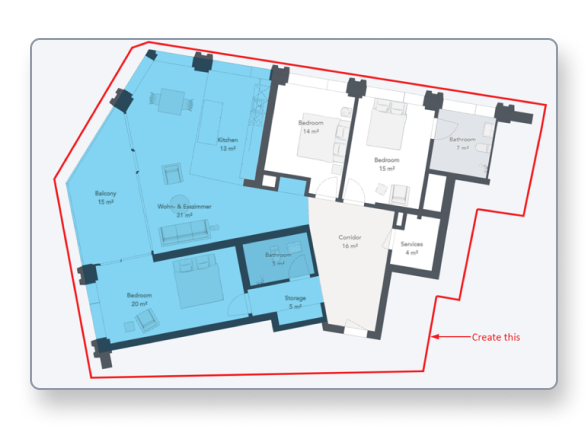
Things to avoid
Top-down images of 3D models
Unfortunately, we can't use images of 3D models or Matterport scans even if they're from a top-down perspective due to perspective distortion, lacking scaling information, and obscured details such as windows and doors. Always make sure to upload a proper 2D floor plan when ordering an Archilogic model conversion.
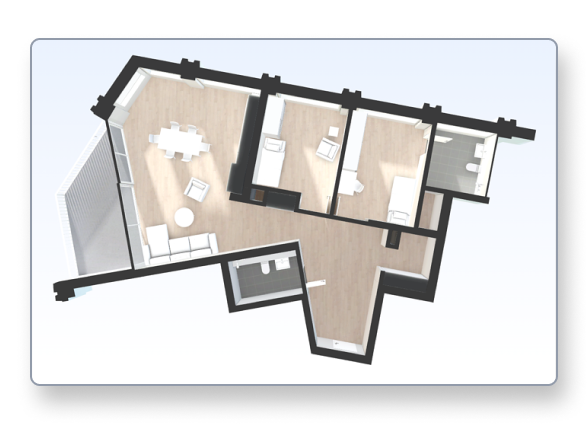
Multi-page PDFs
Our system currently only supports one single floor plan per order. If you have a multi-page PDF containing multiple floor plans, we kindly ask you to separate the floor plan that you want Archilogic to convert, and only attach that one PDF page to the order form.
If you are an Enterprise level customer and have a large number of floor plans to convert, please contact us at support@archilogic.com for bulk order recommendations.
Multiple building levels
If you want us to convert several levels of the same building into an Archilogic model make sure to create a separate order for each level.
We're unable to place more than one level in a scene at the moment as this would cause data consistency issues.
Hand-drawn floor plans
We can usually only use a hand-drawn floor plan for the conversion process if the drawing is very clean and if the measurements stated on the drawing are in line with the dimension of the drawing itself. In the example below, it's clear that the dimensions of the drawing are not in line with the stated lengths. In addition, there are no indications of how wide a wall is, which is why we can't use the drawing to convert it into a 3D model.
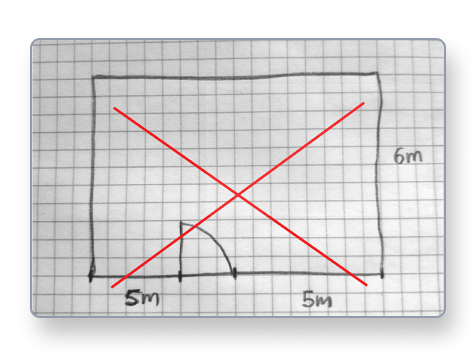
Schematic floor diagrams
Unfortunately, Archilogic can’t convert schematic floor diagrams like the two examples below into a digital floor plan. These kinds of drawings usually lack important details such as doors, windows, or wall strengths and are often also not drawn to scale which would mean that the resulting digital floor plan wouldn’t be accurate and wouldn’t match the real-world dimensions of rooms or buildings.
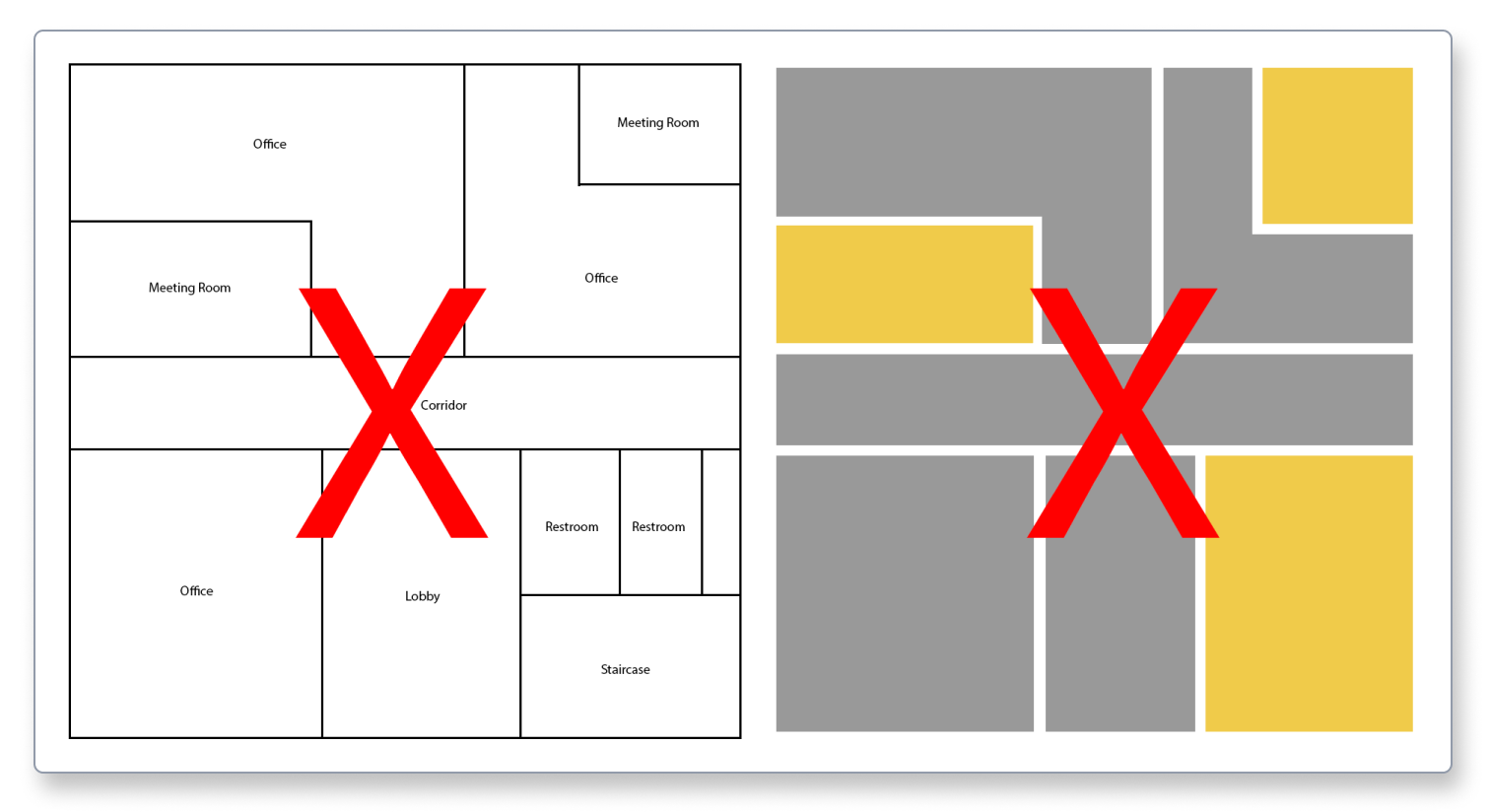
Folds and distortions
If you're planning to upload a physical, paper based floor plan to the order form make sure to use a scanner to convert it into a digital file first instead of using a photocamera. Also make sure that there are no folds or perspective distortions present as we're unable to correct these kinds of distortions in order to convert the floor plans into accurate 3D models.

